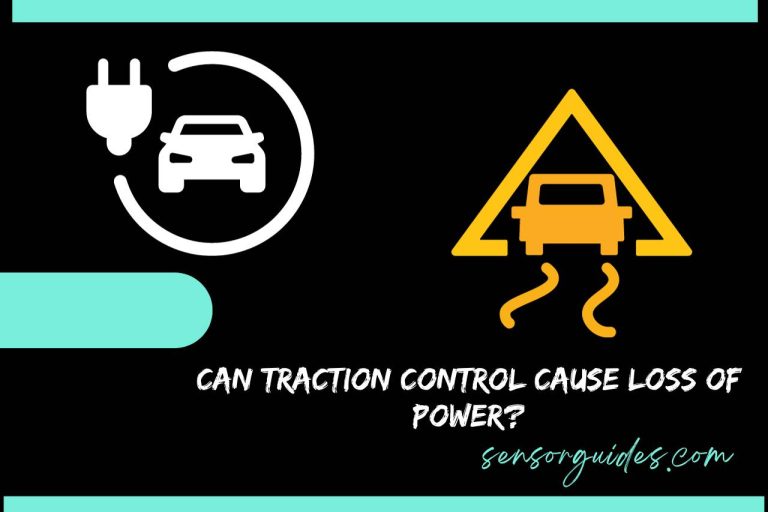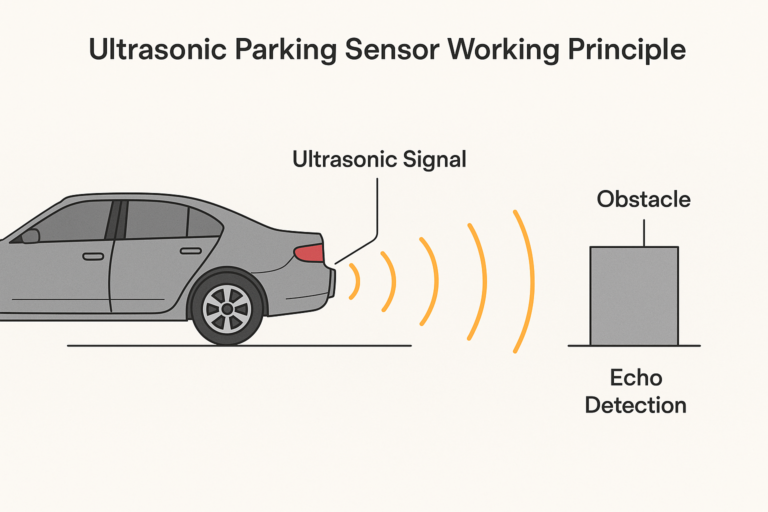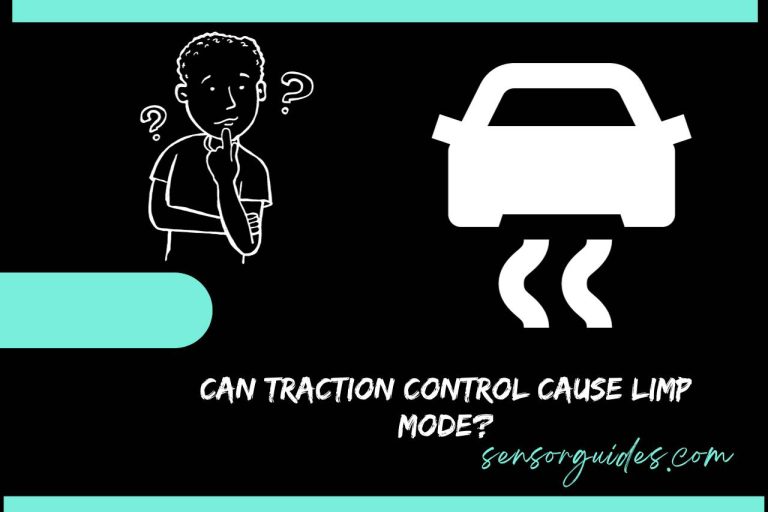What Is A Sun Load Sensor; Everything You Need To Know
A sun load sensor is a device that measures the amount of solar radiation that is incident on a vehicle. If the sun load sensor is not working properly, it can affect the performance of the climate control system.
In this article, we will discuss everything you need to know about the sun load sensors in vehicles. So stick around until the end to find out what you’ve been looking for.
Table of Contents
What is a sun load sensor in a vehicle?
A sun load sensor in a vehicle is a device that measures the amount of solar radiation that is incident on the vehicle. It is typically located on the dashboard or roof of the vehicle. The sun load sensor sends a signal to the vehicle’s computer, which then adjusts the climate control system accordingly.
How does a sun load sensor works?
The sun load sensor uses a semiconductor material, such as silicon or germanium, to absorb the solar radiation. The absorbed radiation creates an electrical current, which is then sent to the vehicle’s computer. The computer uses this information to adjust the climate control system, such as the air conditioning or heater.
Sun load sensors can help improve the passengers’ comfort in a vehicle by keeping the interior cool on hot days. They can also help save fuel by preventing the air conditioner from working as hard. Sun load sensors can also help to extend the life of the vehicle’s interior by preventing the materials from fading or cracking due to exposure to sunlight.
What are the benefits of a sun load sensor in a vehicle?
Here are the benefits of a sun load sensor in a vehicle:
Improved comfort
Sun load sensors can help improve the passengers’ comfort in a vehicle by keeping the interior cool on hot days. This is because the sun load sensor can automatically adjust the climate control system, such as the air conditioning or heater, to compensate for the amount of solar radiation that is incident on the vehicle.
Fuel savings
Sun load sensors can also help save fuel by preventing the air conditioner from working as hard. This is because the sun load sensor can automatically adjust the air conditioning system to only cool the vehicle to a comfortable level, rather than cooling it down to a very cold temperature.
Extended vehicle life
Sun load sensors can also help to extend the life of the vehicle’s interior by preventing the materials from fading or cracking due to exposure to sunlight. This is because the sun load sensor can automatically adjust the climate control system to keep the interior of the vehicle cooler, reducing the amount of sunlight allowed to enter the vehicle.
Overall, sun load sensors can be a valuable addition to a vehicle, as they can help improve comfort, save fuel, and extend the vehicle’s life.
Here are some additional benefits of sun load sensors in vehicles:
- They can help to prevent the driver from getting drowsy or fatigued due to the heat.
- They can help to prevent the vehicle’s electronics from overheating.
- They can help to prevent the vehicle’s tires from overheating.
- They can help to prevent the vehicle’s paint from fading.
If you live in a warm climate or if you often drive in hot weather, then a sun load sensor is a worthwhile investment. It can help to keep you and your passengers comfortable and can also help to save you money on fuel.
Sun Load Sensor Failure Symptoms; Causes, Fixing and Preventing
Sensor guides
What are the problems with sun load sensors in vehicles?
- Damage: Sun load sensors can be susceptible to damage from impact, heat, or moisture. If the sensor is damaged, it will need to be replaced.
- Dirt and debris: Sun load sensors can also be affected by dirt or debris on the sensor. This can interfere with the sensor’s ability to accurately measure the amount of solar radiation that is incident on the vehicle.
- Accuracy: Sun load sensors can also be inaccurate in areas with high levels of dust or pollution. This is because the dust or pollution can scatter the sunlight and make it difficult for the sensor to accurately measure the amount of solar radiation that is incident on the vehicle.
- Cost: The cost of replacing a sun load sensor in a vehicle varies depending on the make and model of the vehicle. In general, the cost of the sensor itself is relatively inexpensive. However, the labor costs to replace the sensor can be more significant.
Here are some additional problems with sun load sensors in vehicles:
- Malfunction: The sun load sensor can malfunction due to electrical problems, such as a short circuit or a bad connection.
- Software problems: The sun load sensor can malfunction due to software problems, such as a corrupt file or a programming error.
- Interference: The sun load sensor can be affected by interference from other electronic devices in the vehicle, such as the radio or the navigation system.
If you experience any of these problems with the sun load sensor in your vehicle, it is important to have it checked by a qualified mechanic. They will be able to diagnose the problem and recommend the best course of action.
Overall, sun load sensors are a relatively reliable device. However, it is important to be aware of the potential problems that can occur with them so that you can take steps to prevent them or to address them if they do occur.
How to troubleshoot a sun load sensor in a vehicle?
Here are the steps on how to troubleshoot a sun load sensor in a vehicle:
- Check for damage: The first step is to check the sensor for damage. Look for any cracks, dents, or other signs of damage. If the sensor is damaged, it will need to be replaced.
- Clean the sensor: If the sensor is not damaged, the next step is to clean it. Use a soft cloth to remove any dirt or debris from the sensor.
- Test the sensor: Once the sensor is clean, you can test it using a diagnostic tool. This will help you to determine if the sensor is working properly.
- Replace the sensor: If the sensor is not working properly, it will need to be replaced. This can be done by a qualified mechanic.
Here are some of the symptoms that may indicate a problem with the sun load sensor in your vehicle:
- The air conditioning system does not seem to be working properly.
- The headlights do not turn on automatically when the vehicle is in bright sunlight.
- The mirrors do not dim automatically when the vehicle is in bright sunlight.
- The climate control system seems to be too hot or too cold, even when the sun load sensor is exposed to direct sunlight.
If you experience any of these symptoms, it is important to have the sun load sensor checked by a qualified mechanic. They will be able to diagnose the problem and recommend the best course of action.
Here are some additional tips for troubleshooting a sun load sensor in a vehicle:
- If you are not comfortable working on your vehicle yourself, you can take it to a qualified mechanic.
- When troubleshooting a sun load sensor, it is important to follow the manufacturer’s instructions.
- It is also important to use the correct diagnostic tool for the vehicle.
- If you are still having problems with the sun load sensor after troubleshooting, you may need to replace it.
How to replace a sun load sensor in a vehicle?
Here are the steps on how to replace a sun load sensor in a vehicle:
- Locate the sun load sensor: The first step is to locate the sun load sensor. This is typically located on the dashboard or roof of the vehicle.
- Disconnect the battery: Before you start working on the sun load sensor, it is important to disconnect the battery. This will prevent any accidental electrical shocks.
- Remove the old sensor: Once the battery is disconnected, you can remove the old sensor. Use a screwdriver to remove the screws that hold the sensor in place.
- Install the new sensor: Once the old sensor is removed, you can install the new sensor. Make sure that the new sensor is properly aligned and that the screws are tightened securely.
- Reconnect the battery: Once the new sensor is installed, you can reconnect the battery.
- Test the sensor: Once the battery is reconnected, you can test the sensor using a diagnostic tool. This will help you to determine if the sensor is working properly.
The cost of replacing a sun load sensor in a vehicle varies depending on the make and model of the vehicle. In general, the cost of the sensor itself is relatively inexpensive. However, the labor costs to replace the sensor can be more significant.
Here are some additional tips for replacing a sun load sensor in a vehicle:
- If you are not comfortable working on your vehicle yourself, you can take it to a qualified mechanic.
- When replacing a sun load sensor, it is important to follow the manufacturer’s instructions.
- It is also important to use the correct tools for the job.
- If you are still having problems with the sun load sensor after replacing it, you may need to take it to a qualified mechanic for further diagnosis.






5 Comments